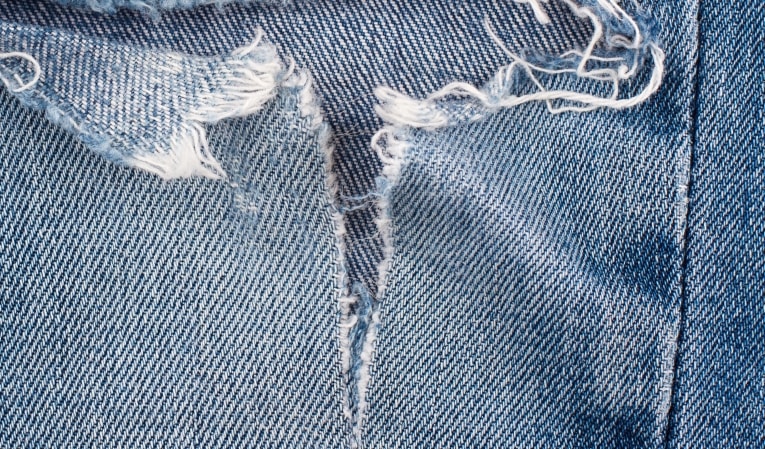Why Do Mourners Tear Keriah on Their Garments?

Tearing Garments Is an Ancient Tradition
Tearing garments upon the death of a close relative, keriah in Hebrew, dates back to biblical times. Jacob tore his garments when he was shown Joseph’s bloodstained cloak and made to believe that his beloved son was dead.1 King David tore his clothes when his father-in-law, King Saul, died.2 And upon hearing of the tragic deaths of his children and the other tragedies that befell him, Job tore his robe.3
This practice was so widespread that after the deaths of Aaron’s two sons Nadav and Avihu during the inauguration of the Tabernacle, Aaron and his surviving sons needed a special command not to tear their garments or let their hair grow as mourners usually did, since this would detract from the joy of the inauguration.4
What is the reasoning behind this practice?
A Diversion From Pain
Some explain that the controlled, religiously sanctioned act of destruction is a therapeutic release from some of the pain and anguish, through diverting the mourner’s thoughts to their torn clothes.5
Keriah Increases the Grief
On the contrary, others opine that, as with other mourning customs, the garments are torn to arouse more anguish and tears from the mourner.6 They argue that if the purpose were to lessen the anguish, there would have been no reason for G‑d to command Aaron and his sons not to tear their clothes during the festivity of the Tabernacle dedication!
The Soul Is Shedding Its Garments
The Zohar writes that the body is like a garment for the soul. In death, the soul sheds its physical garments as it departs to a more ethereal place, where such garments are not needed. Thus, the torn garments are a sign that in essence the soul of the person lives on, beyond the destruction of its erstwhile physical garment.7
Taking this one step further, the mystics say that tearing the garment actually helps the soul let go of its physical attire as it soars upward to heaven.8
Heartbroken in Loss
When mourning most relatives, we tear the right side. However, upon the death of a parent, the tear is made on the left, “exposing the heart.” The Jerusalem Talmud explains that this symbolizes the loss of the mourners’ ability to fulfill the mitzvah to honor their father and mother (at least on a biblical level). We suffer deeply when we can no longer give love to those we love.9
Some explain that mourners tear the clothing over the heart to symbolize that they are heartbroken over their loss.10
Ripping Apart the Judgment
When tragedy strikes, it is a sign that it is a time of severe judgment, when the prosecutorial angels are especially active. Ripping the garment, which the kabbalists explain represents the Divine attribute of gevurah (“severity”), we rip apart the harsh decrees, as it were.11
Arousing Compassion and Prayers
Mourner's tear their outer clothing worn at room temperature. 12When others see that they are exposed and recognize their pain, they are inspired to pray to G‑d for mercy and compassion.13
In conclusion, let us all pray for the day when G‑d will “ wipe the tears off every face”14 with the coming of Moshiach and the resurrection of the dead!
FOOTNOTES
No comments:
Post a Comment